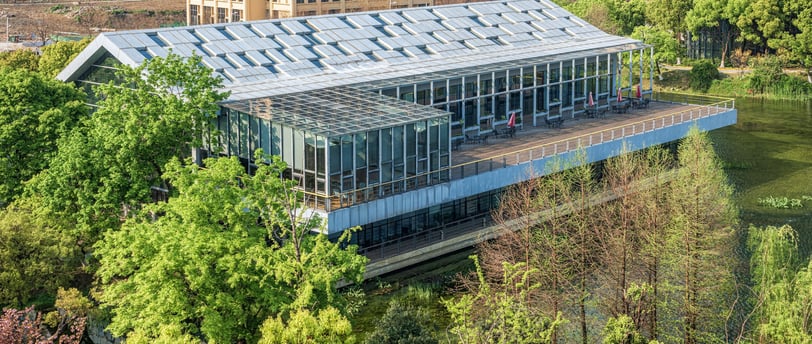Building Resilient Cities: Strategies for Adapting to Climate Change
CLIMATE


As climate change intensifies, cities around the globe face mounting challenges, from rising sea levels and extreme weather events to resource scarcity and population displacement. Urban areas, which house over half of the world’s population, are particularly vulnerable to these impacts. Yet, cities also have the potential to lead the way in addressing climate change by implementing strategies that enhance resilience and adaptability. This article explores key strategies for building resilient cities capable of thriving in the face of a changing climate.
1. Investing in Green Infrastructure
Green infrastructure refers to the use of natural systems and vegetation to manage urban challenges, such as stormwater runoff, urban heat islands, and air quality. By incorporating green spaces and natural ecosystems into city planning, urban areas can better adapt to climate impacts.
Strategies and Examples:
Urban Forests and Green Roofs: Planting trees and installing green roofs can lower urban temperatures, improve air quality, and provide habitats for wildlife. For example, New York City’s MillionTreesNYC initiative planted over a million trees to enhance urban resilience.
Wetlands Restoration: Restoring wetlands helps cities manage storm surges and flooding. In Rotterdam, Netherlands, floating parks and wetland restoration projects serve as natural flood defenses.
Permeable Pavements: Cities like Chicago are using permeable pavements to reduce stormwater runoff and prevent urban flooding.
2. Enhancing Climate-Resilient Urban Design
Climate-resilient urban design focuses on creating structures and spaces that can withstand extreme weather while minimizing environmental impacts. These designs integrate adaptive materials, energy efficiency, and robust infrastructure.
Key Approaches:
Flood-Resistant Architecture: Buildings in flood-prone areas can be designed with elevated foundations, waterproof materials, or floating capabilities. Bangkok has developed elevated walkways and homes as a response to its frequent flooding.
Compact, Mixed-Use Development: Dense urban areas reduce sprawl, cut transportation emissions, and make services more accessible, contributing to lower climate risks.
Resilient Infrastructure: Cities like Copenhagen have implemented “cloudburst boulevards,” streets designed to channel excess rainwater into reservoirs during heavy downpours.
3. Developing Sustainable Water Management Systems
Water scarcity and flooding are two major climate-related challenges for cities. Sustainable water management involves designing systems that can store, conserve, and distribute water efficiently while safeguarding against extremes.
Innovative Solutions:
Rainwater Harvesting: Cities like Singapore have embraced large-scale rainwater collection systems to secure water supplies.
Desalination Plants: Coastal cities, such as Dubai, use desalination plants to convert seawater into potable water, addressing water scarcity issues.
Smart Water Grids: Digital technology allows cities to monitor water usage in real time, detect leaks, and optimize distribution. Barcelona’s smart water grid reduces waste and ensures efficient delivery.
4. Embracing Renewable Energy and Energy Efficiency
Reducing reliance on fossil fuels is essential for mitigating climate change. Cities must transition to renewable energy sources and invest in energy-efficient technologies to reduce their carbon footprint and bolster resilience.
Examples of Action:
Solar-Powered Cities: San Diego, California, has committed to running on 100% renewable energy by 2035, with significant investments in solar infrastructure.
Energy-Efficient Buildings: Retrofitting old buildings with energy-efficient systems, such as LED lighting and improved insulation, is a cost-effective strategy. Cities like Tokyo offer subsidies to building owners who implement energy-saving measures.
Microgrids and Energy Storage: Decentralized energy systems, such as microgrids and battery storage, ensure reliable power during climate-induced disruptions. Boulder, Colorado, has developed microgrid systems for critical facilities.
5. Improving Climate Risk Assessments and Early Warning Systems
Timely information and risk assessments allow cities to anticipate and respond to climate hazards. By using advanced technology and data analytics, urban areas can implement proactive measures to protect residents and infrastructure.
Innovative Tools:
Geospatial Mapping: Tools like GIS (Geographic Information Systems) help cities identify vulnerable areas and plan adaptive strategies. For example, Jakarta uses flood mapping to design better drainage systems.
Early Warning Systems: Coastal cities in India have implemented cyclone warning systems that alert residents and initiate evacuations before storms hit.
Digital Twins: Cities like Singapore use virtual replicas of urban environments to simulate climate impacts and test adaptive measures before implementation.
6. Fostering Community Engagement and Equity
A resilient city is one where all residents—regardless of income, race, or background—have access to resources and a voice in decision-making. Inclusive planning ensures that climate strategies benefit everyone, especially vulnerable populations.
Steps Toward Equity:
Participatory Urban Planning: Programs like Resilient Boston engage communities in creating climate adaptation plans tailored to local needs.
Affordable Housing Solutions: Building energy-efficient, climate-resilient housing for low-income populations ensures that vulnerable communities are not disproportionately affected by climate impacts.
Climate Education and Awareness: Cities like Melbourne, Australia, host public workshops to educate residents about climate change and resilience strategies.
7. Promoting Circular Economy Practices
The circular economy emphasizes reducing waste and reusing resources to create sustainable urban systems. Adopting circular practices can reduce environmental strain while fostering economic growth.
Circular Solutions:
Waste-to-Energy Programs: Cities like Stockholm convert waste into energy, reducing landfill dependency and creating a renewable power source.
Recycling and Upcycling: Urban initiatives in Amsterdam encourage upcycling construction materials and promoting zero-waste living.
Localized Food Systems: Supporting urban agriculture reduces the carbon footprint of food transportation and improves food security.
Conclusion
Building resilient cities is no longer optional—it is an urgent necessity. Climate change poses unprecedented challenges, but it also offers an opportunity to innovate, collaborate, and rethink how we design urban spaces. By embracing green infrastructure, adaptive design, sustainable energy, and equitable planning, cities can transform into hubs of resilience and sustainability. As the world’s population continues to urbanize, creating resilient cities will be key to safeguarding not only urban dwellers but also the future of our planet.

